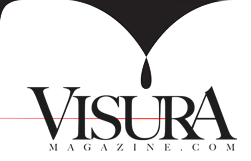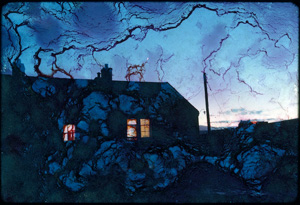
COTTON & SISSE | The Space Between
Issue 04
“Besmirch,” to damage or discolorNew emotions surface when we see the beauty in something that has almost been destroyed—in this case pictures shot on reversal film twenty to thirty years ago. Moments captured in the past become even more precious when we realize what was nearly lost. This series explores the way the mind navigates reality within a photograph. We connect in a new way with the deteriorating images. Water soaked, and over time, they have transformed into individual and unique creations with complex textures and colors.
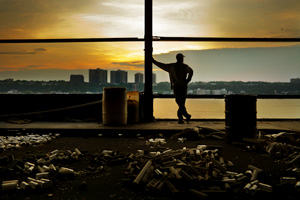
ANDREA STAR REESE | The Urban Cave
Issue 04
“Don’t call me homeless” -CountryThe Urban Cave, which I began in 2007, is an ongoing effort to document men and women living in makeshift dwellings around New York despite the city’s efforts to empty their encampments. It is a story about the resilience and humanity of people who live “on the other side” of conventional society. Most of all it is about a group of individuals and the spectrum of their lives, rather than their deprivations.
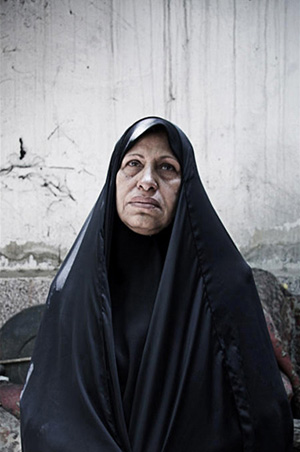
AMRO HAMZAWI | Iraqis Today
Issue 04
Ordinary Iraqis are the first victims of the Iraq War, yet there is barely mention in the media today of the cruel toll the conflict has taken on them. It is difficult to give a precise estimate of the number of civilians who have perished or were injured as a result of the invasion, but by all accounts the conditions on the ground are a humanitarian disaster with the civilians caught in the line of fire between the occupation forces, the militias that have taken over the country, and the various insurgent groups wreaking havoc.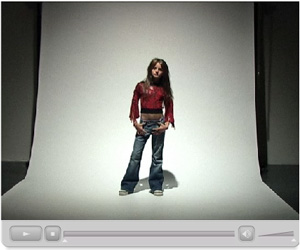
ANOUSH ABRAR | 50 Cent / Deja Vu
Issue 03, NYPH Special
There was a time when eleven-year-old girls would learn the words of songs they liked. They did this in order to sing in front of a crowd of familiar people such as their family and friends.Times change. My work is a reflection of this change.
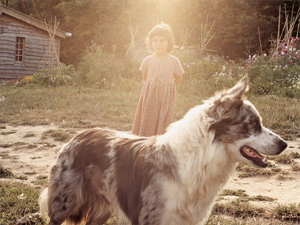
VENETIA DEARDEN | Untitled
Issue 03 NYPH Special
My passion and curiosity for Somerset have been fuelled by my long-time connection, and recent disconnection with this area of the West Country. I grew up in Somerset and my family still lives there. I used to roam for miles on horseback through the fields, woodlands, and muddy bridle paths, and here I inherited a sense of freedom and possibility. This personal photographic journey within the boundaries of my homeland is testament to my love of Somerset.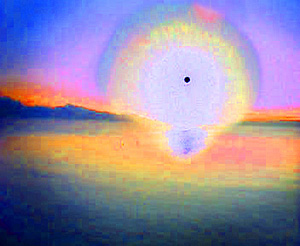
VIRGINIE OTTH | Petites Definitions
Issue 03 NYPH Special
Photographic images are defined today by their pixels. Although the medium derives its definition from a technical foundation, I prefer to work from a semiological perspective. This series comprised of "small (‘low’) definitions," uses "low quality" images from first generation mobile phones in relation to the tradition of representation in painting. The models and the stills (lives) are "illuminated" by the light of a computer screen and refer to portraits of the Renaissance period through the posture of the subjects and the strong directional lighting. The enlarged pixel, retained as a square of solid color, also resembles a "touch" of paint.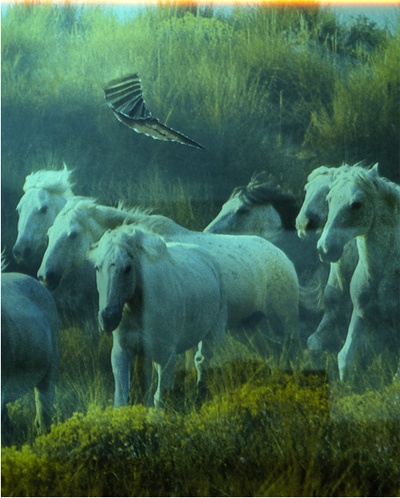
SEBA KURTIS | Stateless
Issue 03 NYPH Special
I had to leave my hometown for economic reasons. According to the system I was stateless and without permission to stay in Europe. When you face deportation, you realize that everything you have can disappear in just one day. The UN Declaration of Human Rights states that everyone has the right to leave his or her own country. However, this well-intentioned governmental principle disregards the individual, as each state has its own conditional terms. These systems maintain the right to decide whether people can stay or not based on such superficial factors as place of birth.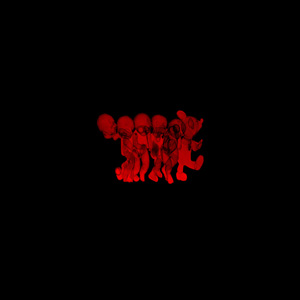
SARA ROITMAN | Evident-Invisible
Issue 03 NYPH Special
EvidentInvisible is a visual metaphor about illegal immigration and human trafficking as a physical and commercial border between humanity and the market.In developing this work, I used an x-ray machine, which we are all familiar with from airports, in combination with a digital camera. I created scenarios that allude to the dream the immigrant pursues through a journey with an uncertain destination, a journey without solid ground.
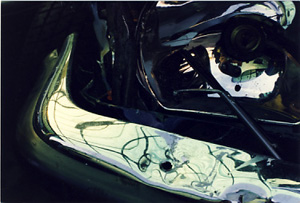
PATRICK WEIDMANN | Untitled
Issue 03 NYPH Special
I would like to accentuate the specifics of the photographic medium. Not just take pictures. The main subject is photography itself.I take pictures of fragments. They are metaphors for what should happen or what should be seen. I want the subjects to disappear behind the idea of being objects, even if they are obsessions. I want to trigger the collusion between the promise of instant happiness and the dark side of death strategies, that which is commercially produced to make us participants in our own end.
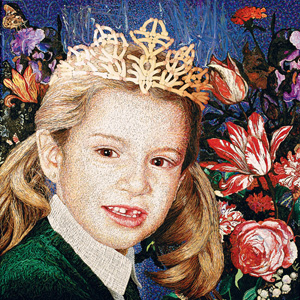
MONDONGO | The Doll House
Issue 03 NYPH Special
Sometimes my husband tells me I am a tyrannical artist. And there may be some truth in that, because after hours of discussing the conceptual implications of the images we choose, I get tired of talking and all the theoretical digressions make me angry. I prefer to keep quiet and put my energy into working on the painting. The physical encounter with the work is primordial for me. When I am working with my hands, I am conscious of my mind functioning in a different way. I am palpably aware that practicing my technique opens a road to the future for me; it sparks new ideas that I would not arrive at purely through abstract discussion.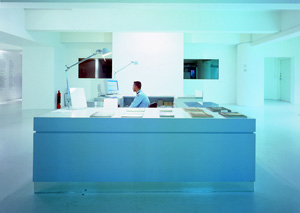
MANOLIS BABOUSSIS | Occupations
Issue 03 NYPH Special
My photographs are untitled; they are the product of an action of the gaze: recognition. They juxtapose the experience of the visible world with a topos of my biography.In the early 1970s, I became interested in the plight of human existence and developed a sensitivity to its influence on architecture and the spaces of psychiatric hospitals. In 1973, pictures were not processed in the form of photo-tableaux.
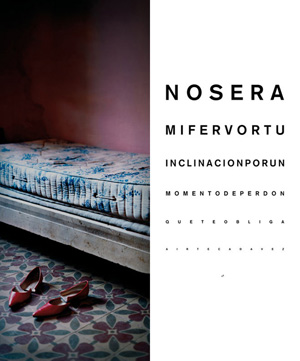
LUIS GONZALEZ PALMA | Tu/Mi Placer
Issue 03 NYPH Special
You/My PleasureThis collaboration is a reflection about surreptitious violence, perceived as a form of upbringing and absorbed from childhood. This violence is transformed into an apparently normal manner of living together—the accepted, sublimated forms of coercion associated with low self-esteem and an irrational desire for power that both stem from personal insecurity and can lead to manipulation, regardless of social or educational levels.
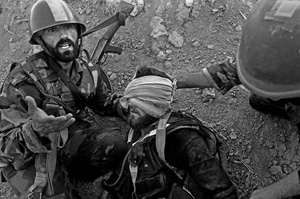
LOUIE PALU | The Void of War
Issue 03 NYPH Special
When I got back to Kandahar Airfield (KAF), the main NATO Base in Southern Afghanistan, west of Kandahar City in the summer of 2008, I wasn’t sure I would have the energy for my next assignment. I had been “on the line” for almost two months now. My next project would be to photograph US Marines in the dreaded Garmsir District in Helmand Province. Luckily, earlier that day when I was with the Canadian Soldiers, I caught what they called the “Montreal Express,” a helicopter ride back from a Forward Operating Base (FOB) to KAF. It was horseshoes for me: better in a helicopter than riding in a vehicle waiting for an IED to blow me sky-high after covering two months of frontline fighting.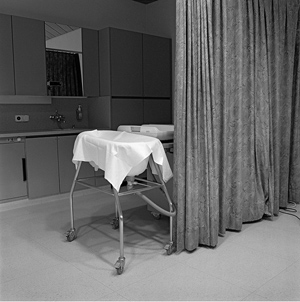
JURAJ LIPSHER | Body Shops
Issue 03 NYPH Special
We are pleased with our ability to mutate human bodies from weak to strong, from ugly to beautiful, from aroused to slackened, from fat to lean. We build chambers for these tasks and we fit them with machinery and apparatus and paraphernalia and equipment and gear. A child is born, a carnal need is assuaged, a sagging breast is lifted, a man dies. We stand ready, 24/7, our polished tools poised. We are like medieval alchemists working on our opus magnum, converting blemished mortals into immaculate angels, our brightly lit laboratories humming silently, awaiting the next transmutation. Standing in such rooms, I try to push my gaze beneath the stainless steel surfaces to find some answers despite the glare of fluorescent lamps.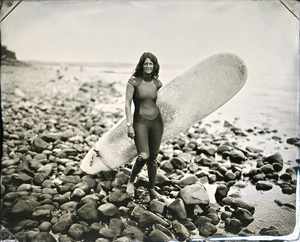
JONI STERNBACH | SurfLand
Issue 03 NYPH Special
The worldwide community of surfers, which is the subject of my tintype portraits called SurfLand, forms a subculture that spans continents, class, age, and gender. My work has taken me to the prized surfing beaches of America’s East and West coasts and my photographs have become a compilation of people’s diversity.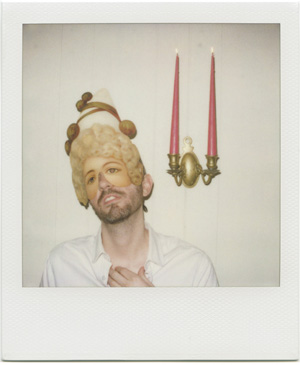
GRANT WORTH | Look Who’s Coming After Dinner
Issue 03 NYPH Special
I created Guess Who’s Coming After Dinner in March through October of 2008. This was a stressful period of time, both globally and personally and a feeling of anxiety and adjustment pervaded. There was a sense that something old was dying and that it was about to be replaced. The current administration was coming to a close, its successor to be determined. I was entering my twenty-ninth year of life on Earth. Astrologically known as “Saturn’s Return,” this is a point in which a person crosses over a major threshold into the next stage of life. There seemed to be a rebirth just over the horizon. The world and my own consciousness were about to reveal the beginnings of whatever was coming next.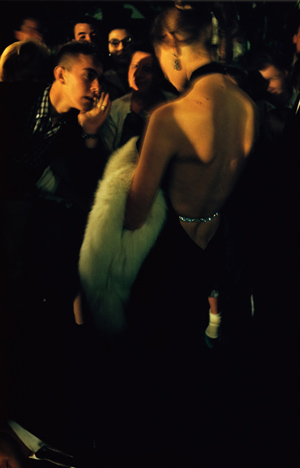
ERNST HAAS | Color Correction
Issue 02s
I looked at an apple for such a long time until it became the first apple I had ever seen.I was so excited that I called a friend to tell him my experience. But how could I find the right words for what I had experienced? How could I describe my visual sensations with such literary words as red, yellow, green, shining, and round after this movement of nuances and counteractions in form and color, even in touch and smell?
+ Introduction by William Ewing, Curator
+ Text by Alex Haas

EDITH MAYBIN | The Tenby Document
Issue 03 NYPH Special
I return to these pictures once in awhile. The more I look into them and read the feelings they stir in me, the more I think perhaps these are stories about my mother.It is a relationship of mystery. I am not being poetic; I just do not understand it or how it works. Then I turn around and there is my daughter.
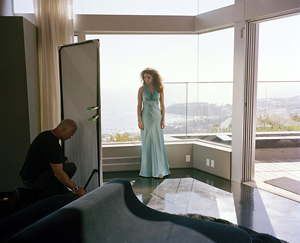
ANOUSH ABRAR | Californication
Issue 02s
The film studios, the celebrities, the entertainment capital of the United States—the state of California revolves around the film industry and its success. Projecting an image of fame and fortune, beauty and happiness, Hollywood draws people like a magnet. I started this photo project in Los Angeles because I wanted to get as close as possible to the young people who flocked to this city seeking fame and fortune.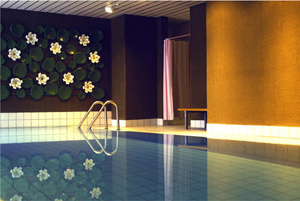
ANNA-LEHMANN BRAUNS | Works
Issue 03 NYPH Special
Interiors are the subject of my photographic work. I choose the public spaces of restaurants and hotel lobbies, bars or just lost corners in a cinema foyer or a disco. The rooms are always deserted and devoid of human presence. The basic idea of my work is the symbolism of longing for what is a fleeting, ephemeral life, its remembrance, and the desire to preserve it.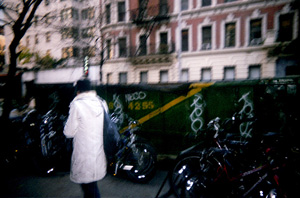
JOANNA MURRAY | Student Focus
Issue 02
Photos by Mapplethorpe House ResidentsWhen I decided to volunteer at Beth Israel Hospital in New York City, I pictured myself in a candy-striper uniform, playing games with the elderly or reading stories to the young. In a conversation with the Volunteer Coordinator, I had the opportunity to explain my newfound passion for art therapy and psychology, my love of photography, and my desire to connect with people. She asked me if I had heard of Robert Mapplethorpe, a renowned photographer who died of Aids. This one question led me to create a unique and meaningful photography project that until this moment, I had never thought possible.
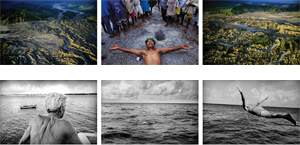
ED KASHI | Three
Issue 02
It came to me in a dream... I was laying in bed one morning and three images from a story in Brazil flowed through my mind's eye like a cinematic strip. This idea of three images... seeing in threes... became a focal point for combing through my more than twenty years of images, looking for the visual connections, visual language and visual poetry of three.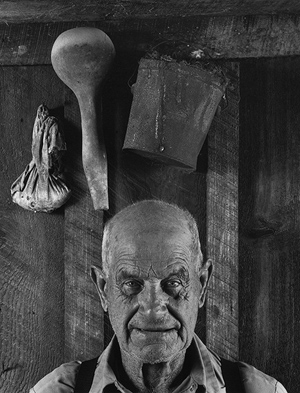
SHELBY LEE ADAMS | Altered Mountain: Portraits of the Holler Dwellers
Issue 2
Growing up in the mountains of Eastern Kentucky I remember my grandfathers talking about the depression era and how difficult it was. They were descendants of the original Holler Dwellers that settled this land. They both remembered men coming around buying up mineral rights with contracts for what was under the land, and for five cents an acre, the farmers sold it to them. Underground deep coal mining was popular in the 1920s and ‘30s and they used ponies and sleds to pull the coal out of the ground. No one saw any harm then. No one suspected that this was an organized assault on several southern states.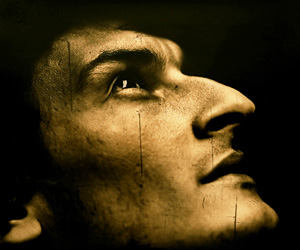
LUIS GONZÁLEZ PALMA | Hierarchies of Intimacy, “Sorrow”
Issue 02
“Sorrow” is the continuation of a larger project, titled Hierarchies of Intimacy, which I began with Graciela De Oliveira in 2004. The titles of the images within the series were created by Graciela De Oliveira and directly relate to each image. Through each title, she attempts to symbolically reflect the experience of absence, in the form of an always-unfulfilled potential, onto relationships with oneself and with the other. I took these photos in austere settings that evince an incomplete world: disturbing and mysterious, but at the same time seductive.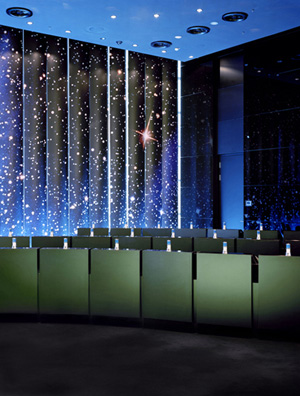
JULIAN FAULHABER | Lowdensitypolyethylene
Issue 02
While studying photography, I assisted several still life and fashion photographers who were shooting for commercials. The agencies clearly emphasized their aesthetic interests: life, trends, purity. This was not new to me, but these aspects sparked my interest in the construction of a lifestyle and in the appearance of buildings and their interiors. I started to photograph nightclubs, loading docks, shopping complexes, sports arenas, and apartments at their moment of completion.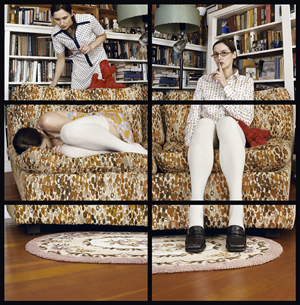
CORNELIA HEDIGER | Doppelgänger
Issue 02
I was born in Switzerland and grew up with the fairy tales of the Brothers Grimm, Hans Christian Anderson, and Trudi Gerster. At a young age I became fascinated with storytelling and intrigued by the subject of the Doppelgänger.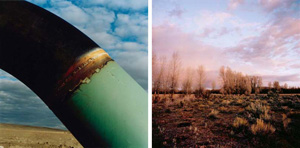
CHRISTOPHER LAMARCA | Natural Gas
Issue 02
The landscape always speaks for itself. It is devoid of ideology. The land is the truth, its reflection a mirror into our lives. To feel the dirt in one’s teeth is a visceral experience, an experience that requires letting go and having the strength to step out of one’s comfort boundaries, both physical and emotional.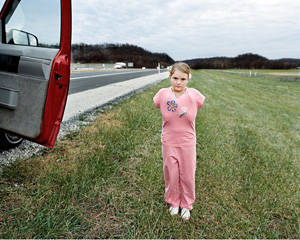
AMY STEIN | Stranded
Issue 02
Stranded began while I was driving 65 miles an hour down I-95 in rural Maryland. In the distance, on the right, I saw a car with its emergency lights flashing, broken down on the side of the highway. As I slowed and approached the vehicle I saw a group of teenage boys crowded under the hood of a souped-up Chevy. Their car was broken down, their day ruined. They were stuck, stranded on the side of one of America’s busiest interstates, waiting for help in the form of a tow truck, the highway patrol or a sympathetic motorist. Cars raced by and no one stopped. Then I pulled up with my camera.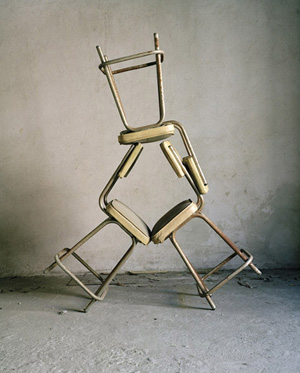
ALEJANDRA LAVIADA | Photo Sculptures
Issue 02
These images are a study of past and future histories, of classicism and modernism, and of photography’s role and relationship to other artistic media.The abandoned buildings and transitional aura of Mexico City are the starting point and inspiration for my photographic work. For each project I choose an “endangered site,” which refers to places that are in the process of being demolished or transformed completely.

HAMID RAHMANIAN | The Glass House
Issue 01
Directed by Hamid RahmanianProduced by Melissa Hibbard
Documentary, 92 minutes, ©2008
A production of Fictionville Studio, in Association with Sundance Channel
The fringes of Iranian society can be a lonely place, especially if you are a teenage girl with few resources to fall back on. The Glass House follows four girls striving to pull themselves out from the margins of society by attending a one-of-a-kind rehabilitation center in uptown Tehran.

LISA ELMALEH | Rooted
Issue 01
The keys to my first car were a means of escape. I was free to drive to the ends of the earth, to be alone in nature. This need to be isolated seemed a primal instinct. Since my late teens, I have been taking solitary road trips, seeking to lose myself along back roads, and finding comfort in the vastness of my natural surroundings. “It is a surprising and memorable, as well as valuable, experience to be lost in the woods any time,” wrote Thoreau, “…and not till we are completely lost, or turned round, - for a man needs only to be turned round once with his eyes shut in this world to be lost, - do we appreciate the vastness and strangeness of Nature.”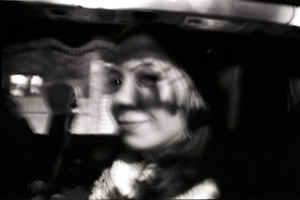
FANNY GRIFFITHS FERRATO | Untitled
Issue 01
Many people mistakenly view the Middle East as dangerous and primitive. These individuals assume that the landscape is mainly desert, women must cover themselves in public, and all men wear turbans. However, people in the West often do not realize that there is more to the Middle East. My images portray a different side to the generally perceived concepts of Syria. I have tried to capture the ordinary day-to-day existence of Syrians.
CESARE BEDOGNE | Broken Images
Issue 01
The Prasomaso Sanatorium, built in an isolated place in the Italian Alps for the treatment of tuberculosis, was deserted in the sixties and remains completely abandoned. Molded by rain and ice, absorbed by the vegetation, it gradually acquired an enigmatic form of existence. When I crossed its corroded threshold for the first time, as a doorway to the unknown, I recognized my landscape of desolation, stilled in a frozen twilight: the mysterious bareness where the soul, alone, returns to itself.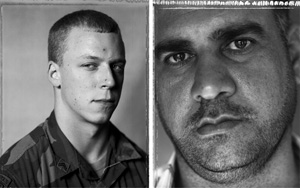
SUZANNE OPTON | Soldier + Citizen
Issue 01
The Soldier photographs take a serious look at the faces of active-duty American soldiers and consider the impact of war on their lives and the lives of those dear to them. Soldiers are traditionally portrayed as heroic and of course that is what we want them to be, but in making these photographs, I wanted to look beyond the heroics, the glamour, and bravado of the military. I wanted to present a quiet look at the individual behind the uniform.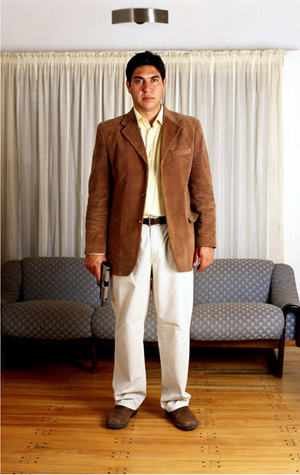
ANANKÉ ASSEFF | Banal Crimes
Issue 01
To live with a sensation of permanent insecurity in a social environment where values are being undermined by arbitrary violence; to come to feel that our own identity is the cause of our vulnerability, that one’s sensation is multiplied indiscriminately… Starting with the 2000-2001 economic and institutional crises in Argentina we began to experience a daily sensation of insecurity and violence in society.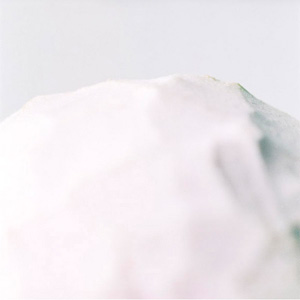
NAHO KUBOTA | Unrevealed
Issue 01
The photographic series "Unrevealed" transforms an unknown organic object into an abstract color patch. The photographs are titled respectively after the prominent primary color in each image. Through this series, the viewers can avoid the process by which they unconsciously associate an image or an object with something already familiar. The images allow the viewers to think about their personal thoughts, such as memory, rather than compelling them to identify the subject of each photograph. By portraying something ordinary as something unfamiliar, the images can change people’s perceptions of what is real.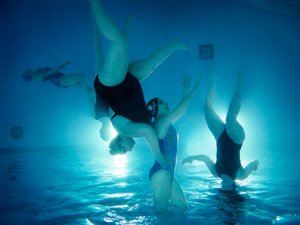
ALINKA ECHEVERRÍA | The Lightness of Being
Issue 01
I am primarily interested in water as an environment and how visual language takes on new significance in the space created by a body of water. Synchronized swimmers enter a silent world of orbital motion, a realm devoid of air and gravity, and make it theirs. In this womb-like environment, heavy bodies become weightless and everyday burdens evaporate. Navigating the water in synchronicity is a sensory experience based on memory and silent language. Individuals breathe together, move together, and become each other's support in the human structures they create but will never see. As the sole underwater spectator, the ceremonies of ritualistic practices became for me a tableau vivant rich in symbolism.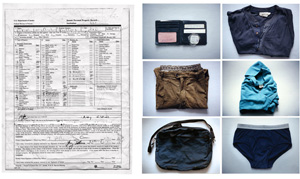
AMY ELKINS | 15 Minutes
Issue 01
It is hard to describe the way everything occurred back then. Most things were rushing and crashing around me. I had moved away from New Orleans less than a year before Hurricane Katrina devastated the first place that felt like home to me. By my second year in New York, all of what I had left behind shifted tremendously. New Orleans was deluged, my grandmother had passed away, and my father called one night from California to tell me he had been sentenced to twenty-seven months in a federal prison for a blue-collar crime. I didn’t pry into knowing too much about it.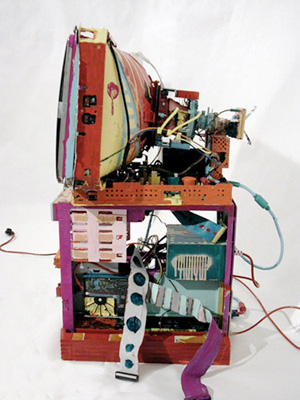
VANÉ RUSSO | Special Violence
Issue 01
In my artwork I try to explore and explode the boundaries between painting and sculpture, figuration and abstraction, western portraiture and African iconography.I cover carefully manipulated found objects with my own gesture of abstract expressionism. With vibrant color and composition, I paint portraits of those objects, which seem to burst, melt and blur into plastic particulars. For this project, I chose to work with an out-dated, partially torn apart computer.
Born in Port-au-Prince, Haiti, I was surrounded by the chaos of bidonvilles in constant expansion, dilapidation, and deconstruction.
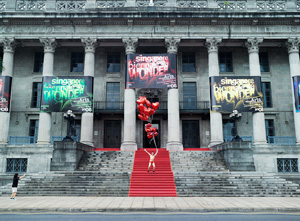
JING QUEK | Jingapore
Issue 01
Jingapore is a series of work exploring the urban landscape, its architecture, and the relationships between man and structure.Portraying a state of nudity or partial nudity, Jingapore attempts to negotiate a return to a primal connection between man and that which is manmade, while at the same time testing the boundaries of acceptable social behavior in an urban landscape.






